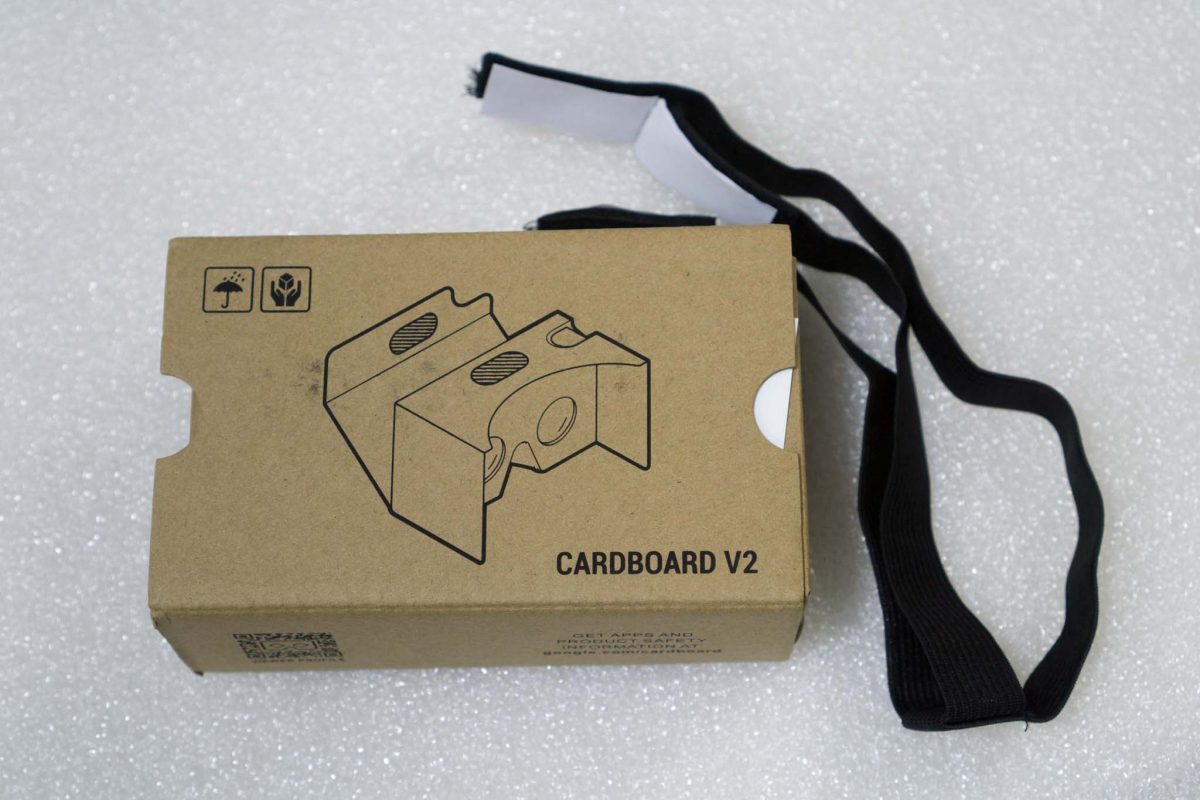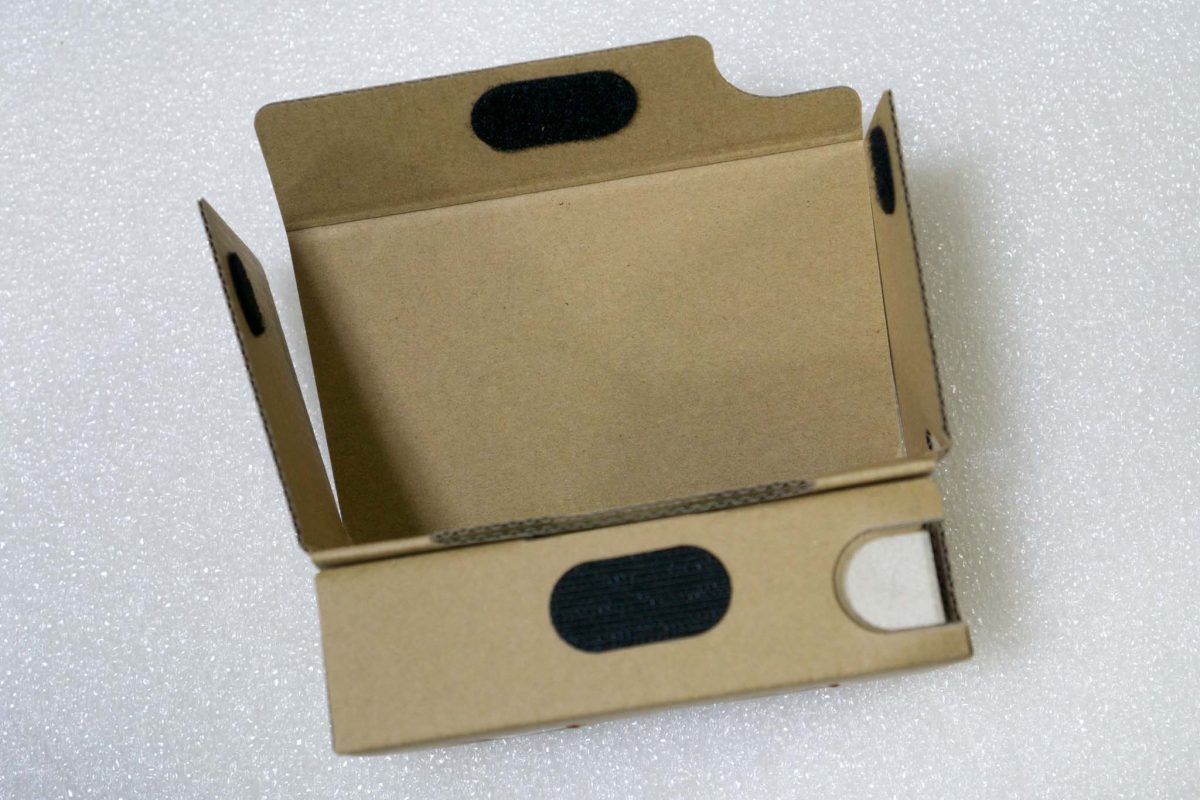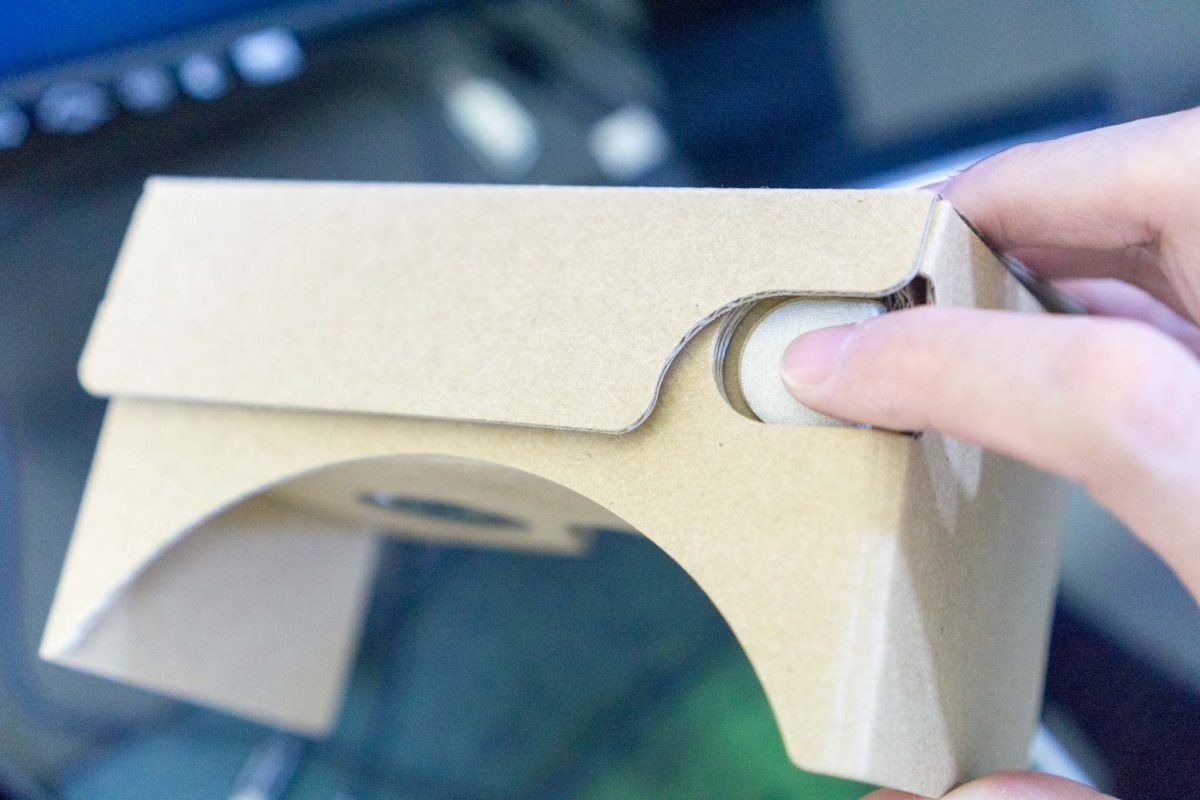When Google first unveiled their VR headset at their developer conference in 2014, it sounded like a joke. It was a headset made with cardboard. But Google was serious. It was a low-cost solution to get VR to the masses. One year later, they updated their Cardboard to V2, which came with a number of improvements.
The really fascinating thing about Google Cardboard is that it was low-cost solution system that you could actually make yourself. Google provides the instructions to build your own Cardboard out of a few everyday items: cardboard, lenses, magnets, velcro and a rubber band.
The electronics in the VR headset comes from your smartphone. Insert your smartphone into the back of the Cardboard, and a Google Cardboard app splits the smartphone display image into two, one for each eye, while applying appropriate adjustments to counter distortion. The smartphone knows whenever your head moves around, so it can make the scene changes as needed to give you the VR experience.
If making the Cardboard is too troublesome, you could also just buy a ready made one. It’s really cheap too. Google sells it at US$15 from their U.S. store, which admittedly might be a bit inconvenient for us here. You might as well just get from local online shopping sites like Lazada. It costs only about S$12. At this price, it’s definitely not worth the hassle to build it yourself.
There are various print designs on the Cardboard V2. On the official Google Store, you’ll also find Cardboard made of better quality materials. These would, expectedly, cost more. The basic Cardboard is perfectly functional though, so if you don’t want to spend any more than necessary, the original Cardboard V2 works just fine.
Local sellers value add by offering a head strap so you that the Cardboard V2 stays on your head without having to hold it up with your hands.

Some basic assembly is required. It basically involves folding the Cardboard V2 into the proper finished configuration.

On the original Cardboard, a magnetic slider switch had served as an input button for the VR interaction. The updated V2 replaced this with a conductive lever that moves mechanically to trigger a touch input on the phone’s touch screen. Not only does this work better with most smartphones, pressing this button also feels more natural.

To get started, there are a couple of things you can experience with Cardboard V2. A good start is with YouTube itself, where you can immerse yourself in a really cool experiential trip into VR videos. Other free apps include VaR’s VR Video Player, Chair In A Room, Gravity Pull and Coastiality VR.
You can make your own VR stills to share using the Cardboard Camera app.
In case you’re wondering, there is a successor to Cardboard V2. It’s DayDream, launched in 2016. It does cost a little more, and compatible with far fewer devices, namely just the Pixel and Pixel XL, Moto Z, ZenFone AR, and Axon 7, at this time.
If you want to jump into VR today, Cardboard V2 is about the cheapest way to go.
Cool post! We’re doing custom branding of these cardboard vr viewer, you should check it out!
cardboards.nl